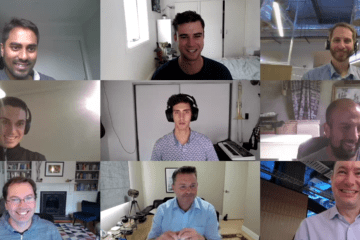I’m the CTO of Refr, an AI healthcare startup dedicated to helping patients access the care they need, faster. As the sole full-stack developer on the team, I’ve led technology stack selection, architecting the core platform, and taking Refr all the way from a back-of-the-envelope idea through to a real product in the hands of clinicians.
There's nothing better than seeing hundreds of users signed up and using your platform daily to improve patient outcomes! Building technology is exciting, but solving a real world problem, and running a profitable, scalable business is even better.
The Referral Problem
If you’ve ever tried to navigate the allied health referral process in Australia, you’ll know how painful it can be. Allied health clinicians—think physios, podiatrists, and more—aren’t able to directly refer their patients for specialist care or imaging covered by Medicare. Instead, they’re forced to send patients back to their GP, often just for a bit of paperwork and a rubber-stamped referral.
That sounds small, but in practice, it causes huge delays. GP appointments are in short supply right now, and patients can face weeks of waiting lists simply to move to the next step in their care. This isn’t just frustrating—it drives up out-of-pocket costs and often means patients are stuck in limbo, not getting the treatment or scans they urgently need.
My Firsthand Experience
Unfortunately, this isn’t just a problem I've heard about- I’ve been through it myself. I injured myself playing mixed netball, and was in a lot of pain. After a visit to the hospital and an X-ray to make sure nothing was broken, I urgently booked in with my physio and he identified that I needed an MRI to properly diagnose what was going on.

An MRI scan of a knee
He ran me through my options: I could pay $300–$450 out of pocket and get the scan immediately, or I could try and get a medicare funded (free) scan.
$0 sounded better than $450, so what was the catch? First, I had to wait days for a GP appointment (just for a referral), then wait again for the MRI to be scheduled, then book another GP appointment for my results before I could even get back to my physio to discuss a plan. All up, the process took 1-2 weeks and a lot of back and forth when I already knew exactly what I needed to help progress my rehab.
How Refr Works
This is the core problem we decided to fix with Refr. Here's how it works:
- The clinician submits a referral digitally while the patient is still in the room.
- We link that patient with a GP for a quick telehealth consult and, in most cases, the referral is reviewed and signed off within minutes.
- The patient books in for their scan or specialist referral immediately, and can start their rehab right away.
Leveraging Generative AI
Clinicians today find they have to take significant time writing referral letters to GPs, to ensure their patients get the right scans and resulting referral. For GPs, it takes time to write to the referral with the right codes and patient details.
Speed is key to driving adoption- clinicians use our app during the consult with the patient and if it takes too long, they simply won't use it.
We leverage Generative AI to help automate drafting these letters and referrals. After filling out the relevant patient information, a single click generates a full draft of either the clinician handover letter or GP referral. The medical professionals have full control over the content, being able to edit & review the content, keeping human-in-the-loop oversight and saving ~5-10 minutes per referral.
Real World Impact
There's nothing better than feedback from real world users about the impact your product is having. A recent example: Anthony (a Sydney based physio) had a patient who’d spent two weeks trying to organise a scan, getting nowhere. With Refr, his patient got a referral in 8 minutes and was booked in to see their specialist the next day. We’re seeing cases like this every week.
Closing Thoughts
Building Refr from scratch- everything from the early architecture sessions to shipping production code—has been a rewarding challenge. There’s something uniquely satisfying about seeing a tool you designed in use every day, making a real difference for clinicians and patients.
If you’re curious to see how it all works, or want to learn more about what we’re building, you can check out more at refr.com.au.


